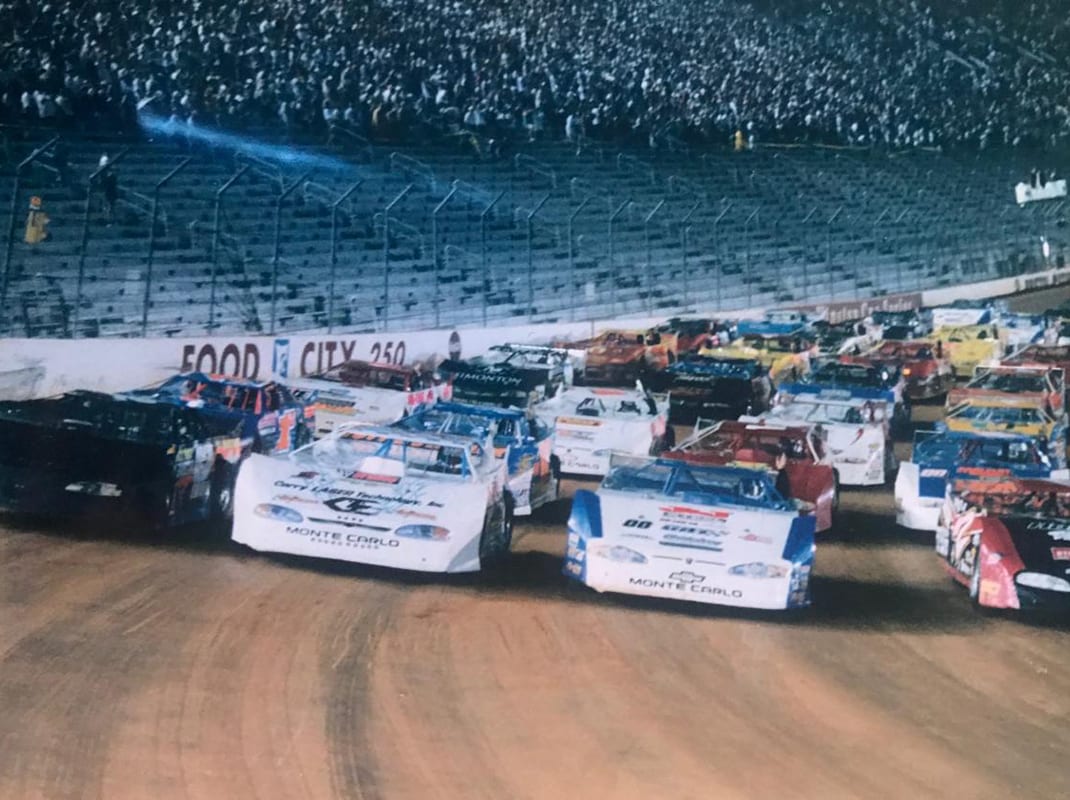BRISTOL, Tenn. – Bristol Motor Speedway and the Hav-A-Tampa Dirt Racing Series made history in 2000. Twenty years ago this June, to be exact.
Before Bristol, the World 100, the Dirt Late Model Dream along many other crown jewel races had solidified their place in history, but did the events that transpired at the hallowed racing grounds located in northeastern Tennessee add to that excitement or put late model racing in its own league?
When people think of Bristol Motor Speedway, they naturally think of NASCAR. With any other form of motorsports or sporting events for that matter, there are a few places that stand out to people with significant events or moments in history that make their mark. Bristol covered with dirt was one of them.
Constructed in 1960, Bristol had its own unique flavor with the concrete-covered surface and stadium-seating that looked like a giant salad bowl. Names like Petty, Earnhardt and Waltrip made their mark in NASCAR’s history books at the famed track. So how could dirt late models make an impact on something that had already cemented their place in history?
Looking back, it doesn’t seem like it’s been nearly 20 years since more than 1,000 loads of dirt was hauled in from a local farm, placed 16 inches above the hard surface of Bristol to make it into a temporary racing venue for dirt cars. Sawdust was used underneath the dirt surface to hold moisture and for easy removal. Not only did the dirt late models race at the coveted Bristol track, the World of Outlaws NOS Energy Drink Sprint Car Series and open-wheel modifieds also competed during the mega event that spanned two weekends.
So how did this all come about? Debra Swims, the wife of the late Mike Swims who passed away in 2007, saw Mike’s passion for race tracks and his series evolve into something special with the running of the first Bristol race.
At the time, Mike was operating the Hav-A-Tampa National tour as well as the family-owned Dixie and Rome Speedway’s located in north Georgia.
“He loved racing, he always felt like dirt track racing did not get the publicity and the mainstream media coverage like it should,” Debra Swims said. “He was always trying to expand the sport to bring more people in. That was really an overall goal of his in every event that he planned.”
Mike’s vision continued, and after talks with Bristol Motor Speedway’s Jeff Byrd and Wayne Estes, it finally came to fruition that dirt late models would race on the dirt at Bristol Motor Speedway.
“He kept trying to think of different things that could be done to start joining the NASCAR fans with the dirt track fans because they’re not always the same,” said Debra Swims. “Mike’s overall business plan was just promoting dirt track racing because he loved it so much…expose it to more people.”
Mia Swims-Green, sister of Mike Swims, talked about the impact this event had on her racing family. It all started with an announcement from the legendary promoter at his 1999 Hav-A-Tampa Racing Series banquet.
“Mike had a goal to showcase dirt track racing for what he always believed it could be and when I say always I mean all the way back to when we were little. His first goal was to make Dixie (Speedway) a showplace and to make it big and to make it successful not just for business reasons but because he truly loved what he did,” said Swims-Green. “He was really excited about the Bristol deal and truly when he talked about it to us, to the family, he would say this is going to change dirt track racing.”
With more than 45,000 fans in attendance for Saturday’s finale at a facility that held nearly 150,000, the inaugural running of the race seemed to be a glowing success because dirt track racing had never seen those types of crowds before.
Eventual Bristol winner Dale McDowell was complimentary of Mike Swims’ path to success.
“Mike Swims was such a person with a bigger vision of what to do. Our industry was strong and gaining some strength about that time and with lots of pieces in the puzzle, it just took a lot to put together, but they did it,” said McDowell. “I was honored to win the inaugural race there. It was a trophy that I’m going to cherish and its one of my keepers for sure.”
Racer turned promoter Ray Cook also applauded the efforts of Swims.
“It just goes to show how much influence and how hard Mike Swims worked to pull that off, that was huge,” Cook said.
The event on a new surface was unchartered territory for all of the race teams. Extensive testing was done before the first competitive laps were run on the half-mile track.
“The guys they hired were from the dirt late model industry so they put a lot of thought into that when they were fixing the track. It was a work in progress with so many moving parts,” said McDowell.
Click below to keep reading.
